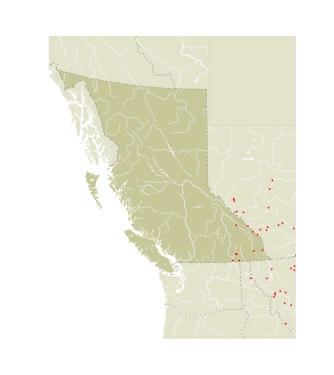The name Euptoieta is derived from the Greek eu (true) and ptoietos (terror or truly terrifying). This is in reference to the type species of the genus, claudia, for the Roman emperor Claudius I. Claudius, Tiberius, Nero, and Caligula were infamous for their terrifying reigns in what is known as the Julia-Claudian dynasty. The common name "fritillaries" is shared with the rest of the subfamily.
Adults of the genus Euptoieta lack silver spots on the underside of the wings. The underside ground colour is a
diffused tan to grey, and more closely resembles some European woodnymphs (Satyrinae). The upperside is that of a typical fritillary. There are only two species in this Neotropical genus, one of which is an occasional migrant to southeastern BC. Biologically and morphologically, this genus is a connecting link between the genus Speyeria in the Nearctic and the well-known Neotropical genus Heliconius Kluk, 1780.
|
|
